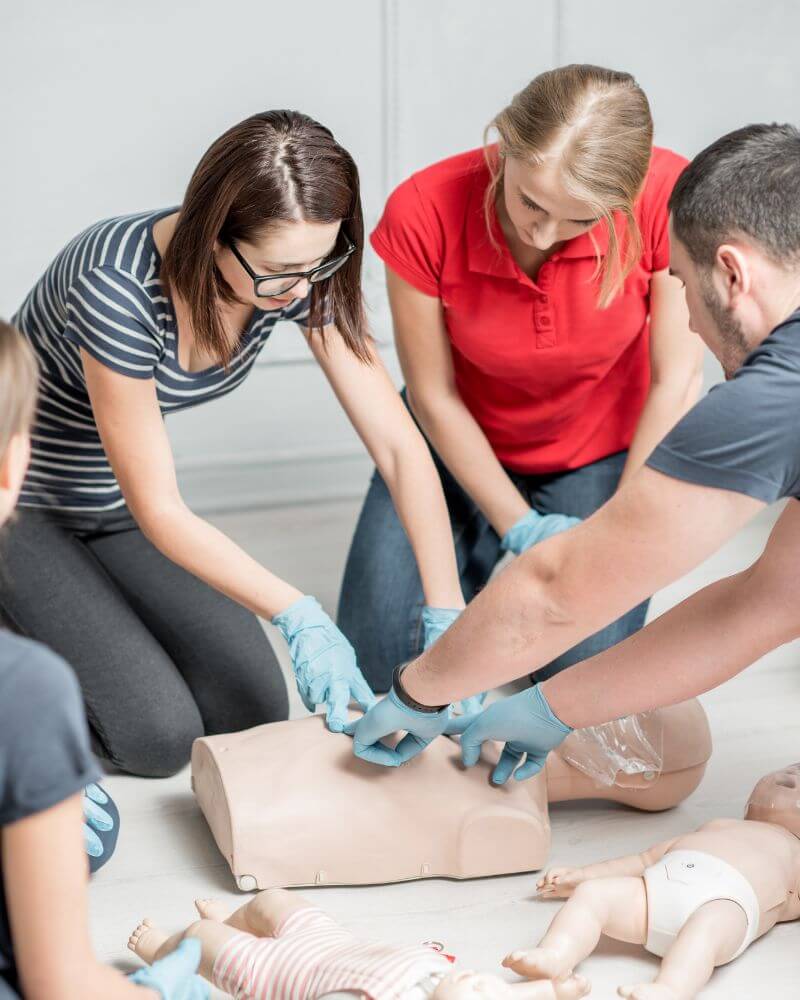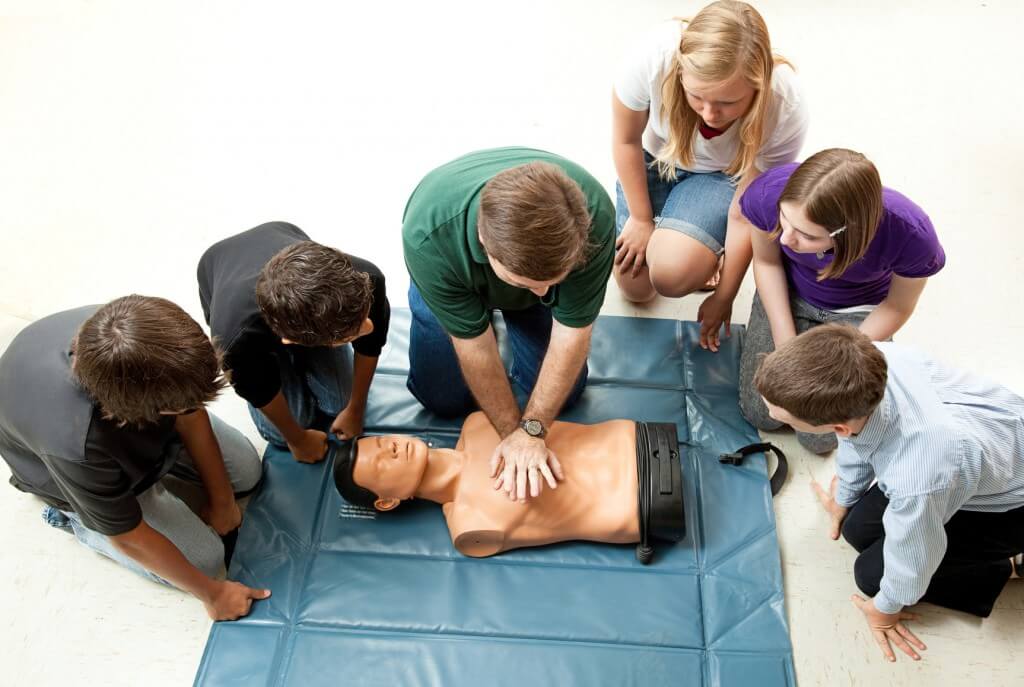Introduction
In a world where crashes can take place anytime, knowing just how to react successfully can be the difference between life and fatality. Cardiopulmonary resuscitation (MOUTH-TO-MOUTH RESUSCITATION) is a crucial skill that everybody must take into consideration learning. But with so many alternatives readily available, browsing the world of CPR courses can feel frustrating. So, which one is right for you? This short article intends to assist you with the numerous mouth-to-mouth resuscitation training courses available, helping you choose the most effective suitable for your needs.
Understanding CPR and Its Importance
What is CPR?
Cardiopulmonary resuscitation (MOUTH-TO-MOUTH RESUSCITATION) is an emergency situation treatment executed on individuals whose heart has quit beating or who have actually stopped breathing. It includes upper body compressions and rescue breaths to preserve blood flow and oxygenation until innovative clinical help gets here.
Why is mouth-to-mouth resuscitation Important?
The value of CPR can not be overemphasized. Stats reveal that immediate mouth-to-mouth resuscitation can double and even triple a target's opportunities of survival after heart attack. Discovering mouth-to-mouth resuscitation not just outfits you with the abilities to conserve lives however likewise raises your confidence in emergency situations.
When Ought to You Use CPR?
CPR needs to be started when a person is unresponsive, not breathing normally, or exhibiting indications of severe distress. Having the ability to recognize these circumstances swiftly can save precious minutes.
Navigating the World of CPR Courses: Types Available
Basic Life Support (BLS) Courses
What is BLS?
BLS training courses are developed for doctor and specialists who require to keep certification in fundamental life assistance techniques. These training courses cover important skills such as top notch chest compressions, respiratory tract administration, and making use of an Automated External Defibrillator (AED).
Who Needs to Take BLS Courses?
If you're a healthcare worker, caregiver, or somebody wanting to improve their medical understanding, a BLS program might be suitable for you.
Heartsaver ® CPR/AED Courses
What are Heartsaver ® Courses?
The Heartsaver ® program supplies courses tailored for nonprofessionals. It focuses on adult, youngster, and baby mouth-to-mouth resuscitation methods together with AED usage.
Who Must Think about Heartsaver ® Courses?
These programs are perfect for teachers, instructors, parents, and any individual in charge of others' security who might require to act in an emergency situation.
First Aid Training course vs. First Aid and CPR Course
What Does a First Aid Course Cover?
A first aid course generally covers the fundamentals of dealing with injuries such as cuts, burns, fractures, and choking incidents without focusing on resuscitation methods.

Why Incorporate First Aid with Mouth-to-mouth Resuscitation Training?
Combining first aid training with Canberra First Aid Course Near Me a CPR course equips you with detailed emergency situation action abilities. By understanding both emergency treatment and resuscitation strategies, you'll be much better prepared to take care of numerous emergencies.
Advanced Cardiac Life Support (ACLS)
What is ACLS Training?
ACLS training surpasses basic life support by including sophisticated medical abilities like administering medications and taking care of respiratory failure.
Who Requirements ACLS Certification?
ACLS qualification is usually needed for medical care specialists operating in crucial care settings such as health centers or emergency rooms.
Choosing the Right Program for You: Elements to Consider
Your Level of Experience
Before joining in any program, assess your current level of understanding pertaining to first aid and CPR methods. Novices may take advantage of starter programs like Heartsaver ®, while skilled people might go with even more extensive training like BLS or ACLS.
Your Responsibilities
Consider your function in your neighborhood or work environment. If you are in charge of others' safety-- like a coach or educator-- you may intend to spend time in thorough emergency treatment and mouth-to-mouth resuscitation training.
Course Format: In-Person vs. Online Options
In-Person Training Advantages
- Hands-on experience Immediate responses from instructors Networking opportunities
Online Training Advantages
- Flexibility Convenience Often cheaper
Understanding Qualification: What You Need to Know
Duration of Certifications
Most accreditations last in between two to three years prior to calling for revival; however, this varies by organization.
Recognized Organizations Offering Certification
Several companies use respectable accreditation programs:
- American Heart Organization (AHA) Red Cross National Safety Council (NSC)
Finding Top quality Educating Providers
Researching Neighborhood Options
Look right into local health centers or community centers supplying first aid courses to find convenient options near you.
Online Resources
Many companies supply online training components that supply accreditation upon completion-- an outstanding option if time restraints are an issue.
Costs Connected with Numerous Courses
|Program Kind|Average Expense|| ---------------------|----------------|| Fundamental Life Assistance|$100 - $150|| Heartsaver ®|$50 - $80|| Emergency treatment Just|$60 - $100|| ACLS|$200 - $300|
How to Prepare for Your Course
Pre-Course Recommendations
Before attending course:
Review any kind of given materials. Wear comfortable clothing. Bring any type of necessary supplies noted by your instructor.What Happens After Completion?
After effectively finishing your chosen course:
You'll obtain a qualification card. Keep it updated according to your provider's guidelines. Apply what you have actually learned regularly through session if possible!Common Misunderstandings About Emergency treatment and CPR Training
Misconception 1: Only Medical Care Professionals Required This Training
This could not be additionally from the truth! Everybody can gain from knowing how to carry out emergency treatment or execute CPR!
Misconception 2: I'll Never Have To Utilize It
Emergency scenarios emerge suddenly; being prepared is constantly wise!
FAQs Regarding First Aid Certificates & Courses
How long does it require to finish a regular first aid course? Most first aid programs take about four hours however can differ depending upon content depth.
Will I get a certification after finishing my course? Yes! The majority of reliable organizations give certificates upon effective completion.
How usually do I need to restore my certification? Usually every two years; contact your certifying organization.
Can I take these programs online? Definitely! Many organizations offer online options permitting flexibility.


Are there age requirements for taking these courses? Typically no age restriction exists; nevertheless, parental consent could be required under particular circumstances.
Do employers need workers to have these certifications? Lots of employers do favor team member trained in very first aid/CPR-- it shows commitment in the direction of workplace safety!
Conclusion: Your Trip Starts Now!
With so many options offered when it comes down deciding on which course fits best-- whether it's Fundamental Life Assistance (BLS), Heartsaver ®, Advanced Heart Life Support (ACLS), or even just general First Aid-- the vital takeaway stays clear: Taking proactive steps towards boosting your data base around emergency treatment & & cardiopulmonary resuscitation will inevitably encourage YOU! By investing time right into navigating the world of CPR courses properly today makes certain preparedness tomorrow-- because every 2nd counts during emergencies!